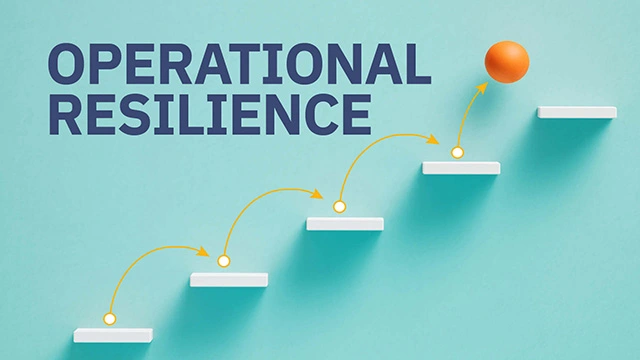This volatility is no longer just background noise for insurers; it is changing risk pools, distorting client demand, and driving up claims costs. The pressure is significant, as global GDP may decline by 0.3% to 3.9% and US inflation is predicted to increase by 0.8% to 2.8%. In the United States alone, households may have to pay an additional $4,900 each year.
Life and P&C insurers are already feeling it: fewer customers, lower premiums, higher claim payouts, and more unpredictable financial results. And yet—there’s opportunity here. The insurers that can build resilience today won’t just survive these shocks; they’ll come out stronger.
Using Resilience to Gain a Competitive Edge
Being resilient is more than simply waiting for things to settle down. It all comes down to converting disruption into momentum. The strongest businesses not only weather difficult times, but also frequently beat their competitors in terms of revenue growth and profit margins.
This entails strengthening insurers on four fronts: people, technology, commercial models, and operations.
1.Resilience in Operations

Costs are increasing, risk is changing, and customer expectations are changing as well. In order to stay up, insurers must reconsider how they operate:
Invest in technology that is ready for the future. By combining data, automation, and artificial intelligence with human knowledge, efficiency and customer experiences can be enhanced.
Supply chains can be strengthened by diversifying sourcing, procurement, and network techniques to prevent bottlenecks caused by disruptions.
Rethink productivity by considering more prudent spending and structural cost reductions. Specialized knowledge can be accessed at scale by utilizing Global Capability Centers (GCCs). Additionally, policies can be placed right where customers are via novel distribution models, such as embedded insurance on travel or e-commerce platforms.
2.Commercial Resilience
Pricing and customer engagement strategies have to adapt to uncertainty. This implies:
making thoughtful decisions about which expenses to pass on to clients and which to absorb.
searching for M&A and expansion prospects, even in slowing markets.
eschewing one-size-fits-all business approaches in favor of customized, behavior-based solutions that reflect the real spending and lifestyle patterns of consumers.
When implemented well, commercial resilience fosters greater loyalty and opens up new growth avenues in addition to protecting revenue.
3.Resilience in Technology

Today, technology presents the greatest risk as well as the greatest promise. On the plus side, analytics and AI can reveal efficiencies and insights. Geopolitical instability and cyberattacks are on the rise in terms of risk.
To increase resilience in this area, insurers ought to:
Increase cybersecurity efforts and implement strong security measures to protect sensitive data.
Utilize AI-powered solutions to expedite procedures like underwriting and claims processing, monitor data in real-time, and identify hazards early.
Create a safe digital core supported by dependable, clean data ecosystems and robust cloud infrastructure.
Making insurance encounters smarter, quicker, and more reliable is the aim, not simply defense.
4.Human Resilience
Without the appropriate people, the sector cannot advance even with state-of-the-art technology. Insurers must take immediate action due to an aging workforce and intense competition for digital talent.
Rethink the employee value proposition to emphasize insurance’s mission to safeguard people’s lives, homes, and futures.
Provide career pathways and ongoing education to keep talent interested and prepared for the future.
Use AI to fill skill gaps and relieve workers of monotonous tasks, not to replace jobs, so that underwriters, for instance, may concentrate on high-value decision-making.
Insurers that have flexible, agile teams prepared to handle ongoing change will be resilient.
The Resilient Will Own the Future
It propels businesses forward rather than merely softening the landing.
Resilience for insurers must be ingrained in every aspect of the business, including strategy, operations, technology, and talent. Trade dynamics will continue to shift, policies will change, and market shocks will come. But insurers that stay adaptable and tightly align transformation to real business outcomes won’t just keep up—they’ll set the pace.



